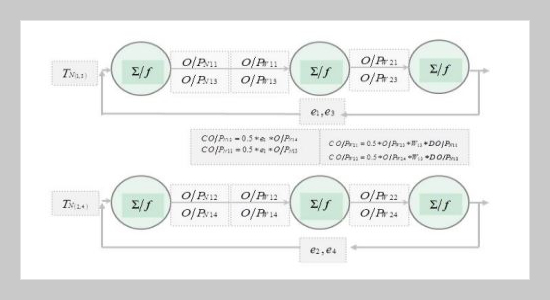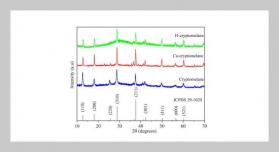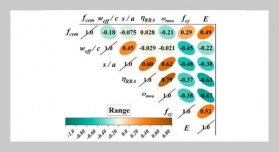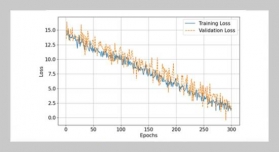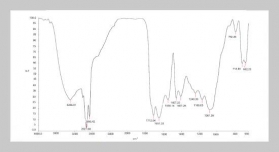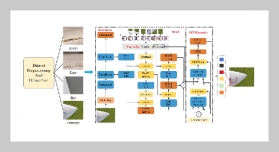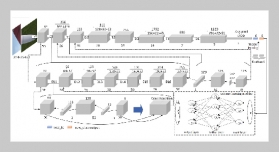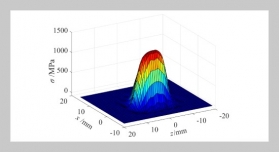1Department of Electronics & Communications Engineering, Technical Engineering College-Baghdad, Middle Technical University,
Ministry of Higher Education Scientific Research, Baghdad-Iraq
Received:
November 12, 2021
Accepted:
April 10, 2022
Publication Date:
April 29, 2022
Copyright The Author(s). This is an open access article distributed under the terms of the Creative Commons Attribution License (CC BY 4.0), which permits unrestricted use, distribution, and reproduction in any medium, provided the original author and source are cited.
Download Citation: ||https://doi.org/10.6180/jase.202302_26(2).0001
ABSTRACT
Wavelet transformations with neural networks can be used to classify and identify the most important problems that may occur when analyzing high-resolution digital images in a distinctive style. In this paper, the discrete wavelet transformations (DWT) were adopted, after using a 3-levels of Haar decomposition to decompose the damaged images. The lost coefficients in the high frequency sub-bands of the 3-haar levels were guessed by using the vertical and horizontal interpolation process between the lost and their adjacent pixels. Evaluation results for these coefficients were more accurate after calculating the mean square errors at the top and bottom of the missing pixels, respectively. Further, the estimated decomposition matrices were directly connected with a trained artificial neural network (ANN) in order to increase the accuracy of the results and obtain high quality images. The artificial neural network architecture was trained in an efficient configuration and represented by a fast forward multi-layer perceptron using resilient back-propagation with the intention of reducing error ranges (i.e., blurring and artifacts). Experimental results were convincing and very close to the desired values.
Keywords:
Wavelet Network; Wavelet Decomposition; Discrete Wavelet Transform (DWT); Artificial Neural Network (ANN); Blurring; Artifacts
REFERENCES
- [1] Q. Zhang and A. Benveniste, (1992) “Wavelet networks" IEEE transactions on Neural Networks 3(6): 889–898.
- [2] K. Sycara, R. Glinton, B. Yu, J. Giampapa, S. Owens, M. Lewis, and L. Grindle, (2009) “An integrated approach to high-level information fusion" Information Fusion 10(1): 25–50. DOI: 10.1016/j.inffus.2007.04.001.
- [3] A. Kott, R. Singh,W. McEneaney, andW. Milks, (2011) “Hypothesis-driven information fusion in adversarial, deceptive environments" Information Fusion 12(2): 131–144. DOI: 10.1016/j.inffus.2010.09.001.
- [4] G.Wang, L. Guo, and H. Duan, (2013) “Wavelet neural network using multiple wavelet functions in target threat assessment" The Scientific World Journal 2013: DOI: 10.1155/2013/632437.
- [5] Y. Chen, B. Yang, and J. Dong, (2006) “Time-series prediction using a local linear wavelet neural network" Neurocomputing 69(4-6): 449–465. DOI: 10.1016/j.neucom.2005.02.006.
- [6] S. Ferrari, M. Maggioni, and N. A. Borghese, (2004) “Multiscale approximation with hierarchical radial basis functions networks" IEEE Transactions on Neural Networks 15(1): 178–188.
- [7] D. Bashiri, A. Aghagolzadeh, J. Museviniya, and M. Nooshyar. “A novel still image error concealment using fragile watermarking in wireless image transmission and packet-switched networks”. In: Cited by: 3. 2008, 792–797. DOI: 10.1109/ISTEL.2008.4651408.
- [8] G. Gur, Y. Altug, E. Anarım, and F. Alagoz, (2007) “Image error concealment using watermarking with subbands for wireless channels" IEEE Communications Letters 11(2): 179–181.
-
[9] A. Al-Azzawi, M. Saripan, and R. Rahmat, (2013) “Wavelet Neural Network for Vector Prediction to Fill-In Missing Image Blocks in Wireless Transmission" Arabian Journal for Science and Engineering 38(12): 3309–3320. DOI: 10.1007/s13369-013-0666-2. -
[10] S. Postalcıo ˘ glu, K. Erkan, and E. D. Bolat. “Comparison of wavenet and neuralnet for system modeling”. In: International Conference on Knowledge-Based and Intelligent Information and Engineering Systems. Springer. 2005, 100–107. -
[11] K. Mertens, L. Verbeke, T. Westra, and R. De Wulf, (2004) “Sub-pixel mapping and sub-pixel sharpening using neural network predicted wavelet coefficients" Remote Sensing of Environment 91(2): 225–236. DOI: 10.1016/j.rse.2004.03.003. -
[12] H. Soliman and M. Omari, (2006) “A neural networks approach to image data compression" Applied Soft Computing Journal 6(3): 258–271. DOI: 10.1016/j.asoc.2004.12.006. -
[13] F. Mokhtarian and F. Mohanna, (2006) “Performance evaluation of corner detectors using consistency and accuracy measures" Computer Vision and Image Understanding 102(1): 81–94. DOI: 10.1016/j.cviu.2005.11.001. -
[14] C. Miravet and F. Rodríguez, (2007) “A two-step neural-network based algorithm for fast image superresolution" Image and Vision Computing 25(9): 1449–1473. DOI: 10.1016/j.imavis.2006.12.016. -
[15] L. Caponetti, C. Castiello, and P. Górecki, (2008) “Document page segmentation using neuro-fuzzy approach" Applied Soft Computing Journal 8(1): 118–126. DOI: 10.1016/j.asoc.2006.11.008. -
[16] K. Hammouche, M. Diaf, and P. Siarry, (2008) “A multilevel automatic thresholding method based on a genetic algorithm for a fast image segmentation" Computer Vision and Image Understanding 109(2): 163–175. DOI: 10.1016/j.cviu.2007.09.001. -
[17] C. Wu, K. Chau, and Y. Li, (2009) “Methods to improve neural network performance in daily flows prediction" Journal of Hydrology 372(1-4): 80–93. DOI: 10.1016/j.jhydrol.2009.03.038. -
[18] J. Leandro, R. Cesar-Jr, and L. Costa, (2009) “Automatic contour extraction from 2D neuron images" Journal of Neuroscience Methods 177(2): 497–509. DOI: 10.1016/j.jneumeth.2008.10.037. -
[19] J. Chen, X. Chen, J. Yang, S. Shan, R. Wang, and W. Gao, (2009) “Optimization of a training set for more robust face detection" Pattern Recognition 42(11): 2828–2840. DOI: 10.1016/j.patcog.2009.02.006. -
[20] H. Ni and Y. Li, (2017) “Spatial Error Concealment Algorithm Based on Adaptive Edge Threshold and Directional Weight" International Journal of Pattern Recognition and Artificial Intelligence 31(8): DOI: 10.1142/S0218001417540143.


